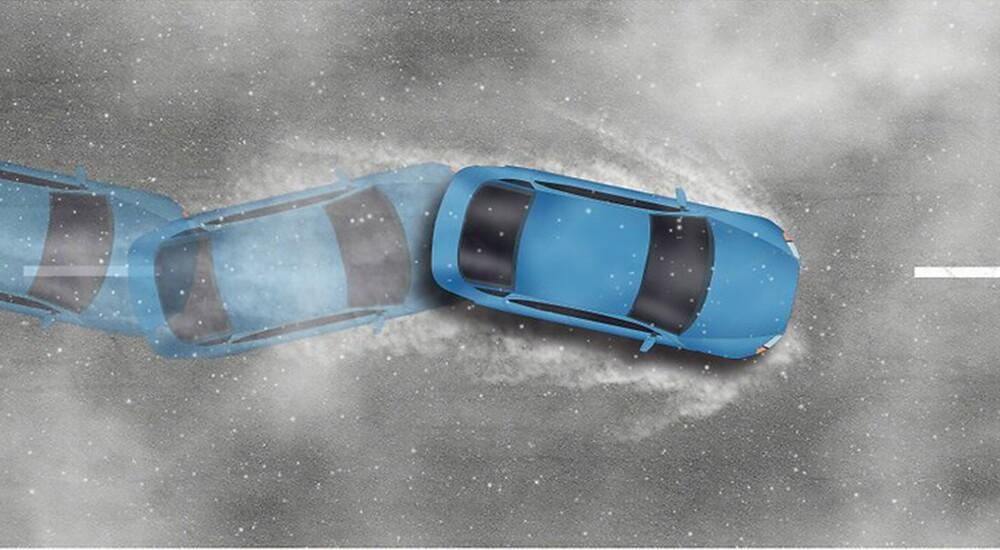Why Hydroplaning Happens and How You Can Prevent It

Driving in the UAE often means clear skies, dry asphalt, and bright sunshine. But when sudden rainfall hits the roads, drivers face a dangerous risk known as hydroplaning. It is one of the most common yet overlooked causes of accidents in wet conditions. Understanding why hydroplaning happens, and how you can prevent it, could be the difference between a safe journey and a frightening roadside incident.
In this guide, we will break down the science behind hydroplaning, the common factors that make it worse, and practical steps to keep yourself safe when roads become slippery.
What Is Hydroplaning?
Hydroplaning occurs when water builds up between your vehicle’s tyres and the road surface. Instead of gripping the asphalt, your tyres glide on a thin layer of water. This reduces traction, makes steering unresponsive, and in many cases leads to loss of control.
Hydroplaning can happen at speeds as low as 55 km/h if road and tyre conditions are poor. The risk increases with the depth of water on the road, worn-out tread patterns, and sudden driver movements like harsh braking or sharp steering.
The Science Behind Hydroplaning
When tyres move over water, they are designed to push it out through grooves and channels in the tread. But if the volume of water is too much, or if your tyres cannot disperse it effectively, the water pressure lifts the tyre slightly off the road. This creates a floating effect similar to skimming over the surface of a pool.
The smoother or more worn a tyre is, the faster hydroplaning can occur. Modern tread designs with rain grooves reduce this risk by directing water away from the contact patch, allowing the tyre to maintain grip even in wet conditions.
Factors That Increase Hydroplaning Risks
Several conditions make hydroplaning more likely. Knowing these factors will help you take preventive action:
-
Worn-out tyres: Shallow tread depth cannot clear water effectively.
-
High speed: Faster speeds increase the water pressure under the tyre.
-
Sudden braking or steering: Abrupt inputs can break traction.
-
Under-inflated tyres: Incorrect air pressure reduces the tyre’s ability to channel water.
-
Heavy rainfall and puddles: Even shallow water can cause problems when combined with worn tyres.
How to Prevent Hydroplaning
1. Maintain Proper Tyre Health
Check your tyre tread depth regularly. Anything below 2 mm is unsafe for wet conditions. Ensure that your tyres are properly inflated according to your vehicle’s manual.
2. Reduce Speed in Wet Weather
Slowing down is the most effective way to reduce the chance of hydroplaning. Lower speeds mean your tyres can push water away more efficiently.
3. Avoid Sudden Movements
Smooth driving is key. Avoid sharp turns or sudden braking on wet roads. Instead, apply gentle steering and braking to maintain stability.
4. Follow the Tracks of Other Vehicles
Driving in the tracks of the vehicle ahead helps because the water has already been displaced, giving your tyres a clearer path.
5. Choose Tyres Designed for Wet Grip
Investing in tyres with rain-optimised tread patterns makes a significant difference. Many modern tyres come with advanced rain grooves that enhance water evacuation. Checking the tyre price in UAE before buying can also give you an idea of brands that balance affordability with wet-weather safety.
What to Do If Your Car Hydroplanes
Even with precautions, hydroplaning can still occur. Here’s how to react safely:
-
Stay calm and don’t panic.
-
Ease off the accelerator gently. Do not slam on the brakes.
-
Hold the steering wheel steady. Avoid jerking the wheel.
-
Let the tyres regain traction. Once you feel the grip return, you can slowly steer or brake as needed.
This calm approach allows your vehicle to naturally slow down and regain contact with the road surface.
Why Tyres Matter Most
Your tyres are the only point of contact between your car and the road. During rain, their role becomes even more critical. Tread depth, pressure, and design all determine how effectively they channel water. Investing in quality tyres not only protects you from hydroplaning but also enhances everyday driving comfort and safety.
Drivers in the UAE often focus on performance in dry conditions, but overlooking wet-road safety can be risky. Choosing the right tyres Dubai drivers prefer for both summer heat and occasional rain will keep you better prepared year-round.
FAQs
What speed does hydroplaning usually occur?
Hydroplaning can begin as low as 55 km/h depending on water depth, tyre tread, and inflation levels. Higher speeds significantly increase the risk.
Can new tyres prevent hydroplaning completely?
No, even new tyres cannot eliminate the risk. However, they reduce the chances by providing deeper grooves and better water evacuation compared to worn tyres.
Should I brake when my car hydroplanes?
No, braking suddenly can worsen the skid. Instead, ease off the accelerator, hold the steering steady, and let the car slow down until traction returns.
Do wider tyres hydroplane more?
Yes, wider tyres can hydroplane more easily since they spread weight over a larger area, making it harder to cut through water compared to narrower tyres.
How often should I check tyres for hydroplaning safety?
It is advisable to check tread depth and tyre pressure once a month, especially before the rainy season in the UAE.
Conclusion
Hydroplaning may sound like a rare phenomenon, but it only takes a sudden rain shower to make UAE roads dangerous. By maintaining your tyres, reducing speed in wet conditions, and adopting smoother driving habits, you can greatly lower your risk.
Remember, the road might change in an instant, but your preparation will always give you the upper hand. Safe driving starts with awareness, and when it comes to rain, your tyres are your best defence.







